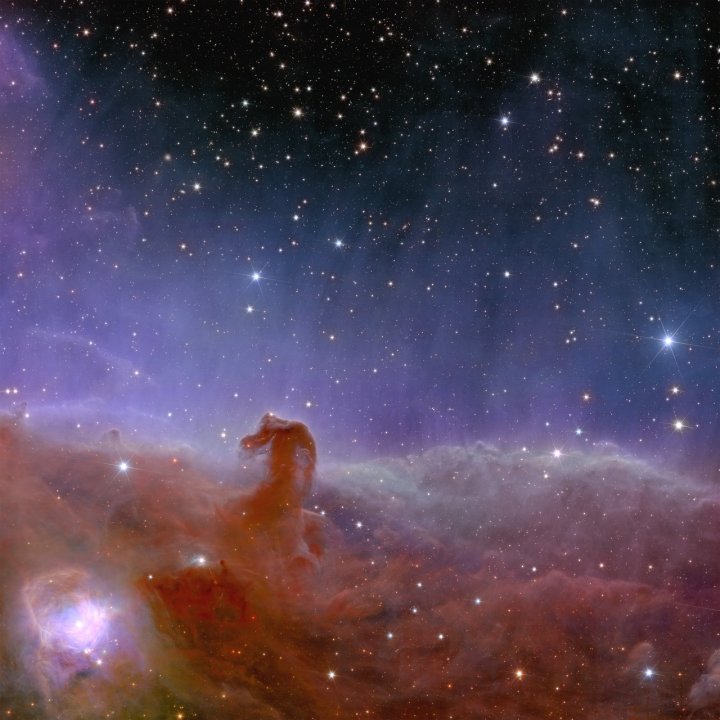The European Space Agency (ESA) has released the first full-color images taken by Euclid, a space telescope that was launched earlier this year to probe the mysteries of dark matter and dark energy. Euclid will image a huge area of the sky to build up a 3D map of the universe, helping researchers to track the dark matter that is clustered around galaxies and the dark energy that counteracts gravity to push galaxies apart.

Euclid is designed with a wide field of view, meaning it is unlike telescopes like the James Webb Space Telescope which is designed to look in very high resolution at specific targets. Instead, Euclid looks over a large area to capture views that will cover one-third of the sky and contain billions of galaxies. Even so, Euclid is still powerful enough to see some targets in stunning detail, like this image of the famous Horsehead Nebula which is located 1,375 light-years away.
Primarily, though, Euclid will be used to look at galaxies on a larger scale, such as an image that shows the Perseus cluster. This cluster contains thousands of galaxies, with hundreds of thousands more galaxies visible in the background.

“We have never seen astronomical images like this before, containing so much detail. They are even more beautiful and sharp than we could have hoped for, showing us many previously unseen features in well-known areas of the nearby Universe. Now we are ready to observe billions of galaxies, and study their evolution over cosmic time,” said René Laureijs, ESA Euclid Project Scientist, in a statement.

Euclid’s preliminary test images were released in August this year, but soon after the telescope developed an issue with its guidance system. The instrument which was designed to lock onto stars was intermittently failing, causing errors. Fortunately, that issue was fixed with a software update in October, and the telescope is now able to capture these beautiful images of various targets.

“Euclid’s first images mark the beginning of a new era of studying dark matter and dark energy,” said Mike Seiffert, Euclid project scientist at NASA’s Jet Propulsion Laboratory. “This is the first space telescope dedicated to dark universe studies, and the sheer scale of the data we’re going to get out of this will be unlike anything we’ve had before. These are big mysteries, so it’s exciting for the international cosmology community to see this day finally arrive.”

Editors' Recommendations
- Stunning image shows the magnetic fields of our galaxy’s supermassive black hole
- Get out the scrapers: Euclid space telescope is getting deiced
- See planets being born in new images from the Very Large Telescope
- James Webb telescope captures a dramatic image of newborn star
- Stunning James Webb image shows the beating heart of our Milky Way




